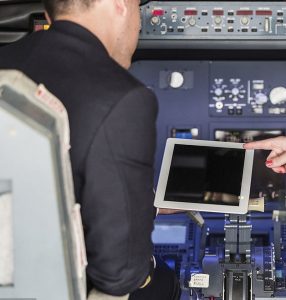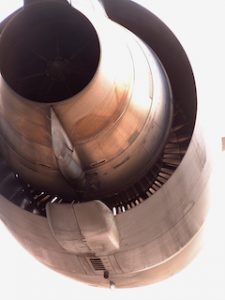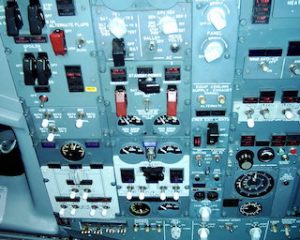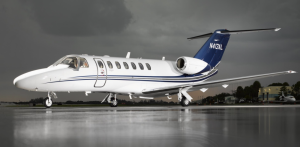Why Flying School Kenya Is The Ideal Choice
 Nairobi, the vibrant capital of Kenya, is rapidly becoming a premier destination for pilot training. The city’s unique weather conditions and diverse airspace environments offer valuable training experiences that are essential for developing proficient pilots. This article explores how Nairobi’s weather and airspace contribute to the quality of training at flying schools in Kenya, highlighting why Nairobi is an ideal location for aspiring aviators.
Nairobi, the vibrant capital of Kenya, is rapidly becoming a premier destination for pilot training. The city’s unique weather conditions and diverse airspace environments offer valuable training experiences that are essential for developing proficient pilots. This article explores how Nairobi’s weather and airspace contribute to the quality of training at flying schools in Kenya, highlighting why Nairobi is an ideal location for aspiring aviators.
Nairobi’s weather conditions
Weather conditions play a pivotal role in pilot training, as they significantly influence flight operations and safety. Nairobi’s weather offers a variety of scenarios that are beneficial for training purposes, making it a prime location for flying schools in Kenya.
1) Clear skies
Nairobi is known for its generally clear skies, especially during the dry season. This provides pilots-in-training with ample opportunities for VFR (Visual Flight Rules) practice. Training in clear weather conditions helps students build confidence in their flying skills, allowing them to focus on mastering basic flight manoeuvres and navigation without the added complexity of adverse weather.
Benefits of clear skies for training
- Enhanced visibility: Clear skies offer excellent visibility, which is crucial for learning basic flight manoeuvers, navigation, and situational awareness. Students can practice visual navigation and develop their ability to identify landmarks and follow flight routes.
- Basic flight skills: Training in clear conditions helps students develop a solid foundation in flying techniques, including takeoffs, landings, and basic in-flight manoeuvres. It also allows them to gain experience in managing aircraft performance and handling.
- Building confidence: Flying in favourable weather conditions helps build confidence and reduces the stress associated with learning to fly. This confidence is essential for tackling more complex scenarios as training progresses.
2) Occasional thunderstorms
While clear skies are common, Nairobi also experiences occasional thunderstorms and other adverse weather conditions. These scenarios provide valuable training opportunities for pilots, preparing them for real-world challenges.
Benefits of training in adverse weather
- Handling turbulence: Thunderstorms and associated turbulence present an opportunity for students to learn how to manage and navigate through challenging weather conditions. This experience is vital for developing the skills needed to handle in-flight turbulence and adverse weather.
- Instrument Flight Rules (IFR) Training: Adverse weather conditions often require pilots to rely on their instruments for navigation and control. Training during these conditions helps students become proficient in IFR operations, a critical skill for handling low visibility and challenging weather scenarios.
- Emergency procedures: Thunderstorms can simulate emergency situations that pilots may encounter in real life. Training under these conditions helps students practice emergency procedures and develop the ability to make quick, informed decisions.
3) Variable weather patterns
Nairobi’s weather patterns can vary, including temperature changes and seasonal variations. This variability allows students to experience a range of flying conditions and prepare for different scenarios they may encounter throughout their careers.
Benefits of variable weather
- Adaptability: Exposure to different weather conditions helps students learn to adapt to changing environments. This adaptability is essential for pilots who must be prepared for a wide range of weather scenarios during their careers.
- Flight planning: Variable weather conditions require pilots to develop strong flight planning skills. Students learn how to assess weather reports, plan alternate routes, and make informed decisions based on current and forecasted conditions.
- Risk management: Understanding and managing the risks associated with variable weather patterns is a crucial skill for pilots. Training in Nairobi’s diverse weather conditions helps students develop a strong sense of risk management and safety awareness.
Nairobi’s airspace
In addition to its weather conditions, Nairobi’s airspace offers a mix of controlled and uncontrolled environments that are essential for pilot training. This diversity provides students with a well-rounded understanding of airspace management and interaction with air traffic control.
1) Controlled airspace
Nairobi’s controlled airspace includes busy sectors around Jomo Kenyatta International Airport (NBO) and other regional airports. Training in controlled airspace is crucial for learning how to interact with air traffic control (ATC) and follow established procedures.
Benefits of training in controlled airspace
- Air traffic control interaction: Students learn how to communicate effectively with ATC, follow clearances, and adhere to air traffic instructions. This experience is essential for ensuring safe and efficient operations in busy airspace.
- Procedure adherence: Controlled airspace requires adherence to specific procedures, including altitude assignments, routing, and speed restrictions. Training in this environment helps students understand and follow these procedures, preparing them for operations in similar environments worldwide.mTraffic Management: Operating in controlled airspace provides students with experience in managing traffic, including coordination with other aircraft and avoiding potential conflicts. This experience is vital for ensuring safety and efficiency in busy airspace.
2) Uncontrolled airspace
Nairobi also includes uncontrolled airspace areas, where pilots have more freedom but must exercise greater responsibility for their own navigation and safety.
Benefits of training in uncontrolled airspace
- Autonomy and decision-making: Uncontrolled airspace provides an opportunity for students to practice autonomous navigation and decision-making. They learn to rely on their training and judgment to safely navigate and manage their flight.
- Collision avoidance: In uncontrolled airspace, pilots are responsible for their own collision avoidance. Training in this environment helps students develop situational awareness and effective lookout techniques.
- Self-reliance: Students learn to handle various aspects of flight planning and management independently, which is crucial for their development as skilled and self-reliant pilots.
3) Airspace integration
The integration of controlled and uncontrolled airspace around Nairobi provides a comprehensive training environment. Students gain experience in transitioning between different types of airspace, which is essential for operating in diverse environments.
Benefits of airspace integration
- Seamless transitions: Training in integrated airspace environments helps students practice transitioning between controlled and uncontrolled airspace. This experience is important for managing flights that involve multiple types of airspace.
- Coordination and communication: Students learn to coordinate with ATC and other pilots when transitioning between different airspace types. Effective communication and coordination are essential for ensuring safe and efficient operations.
- Holistic understanding: Exposure to a range of airspace environments provides students with a holistic understanding of airspace management. This comprehensive knowledge prepares them for various operational scenarios they may encounter in their careers.
Choosing the right flying school in Kenya
Given Nairobi’s unique weather conditions and airspace environments, choosing the right flying school is essential for maximising the benefits of training in the city.
1) Facilities and equipment: Look for flying schools in Kenya that offer advanced training facilities, including high-fidelity simulators and modern training aircraft. These resources enhance the training experience and ensure that students are well-prepared for real-world flying conditions.
2) Instructor expertise: Select a flying school with experienced instructors who have extensive knowledge of Nairobi’s weather and airspace. Experienced instructors can provide valuable insights and guidance based on their real-world experience in these environments.
3) Training programs: Choose a flying school that offers comprehensive training programs, including both VFR and IFR training. A well-rounded program should cover various aspects of flying, including handling different weather conditions and navigating diverse airspace environments.
4) Career support: Consider flying schools that offer robust career support, including job placement assistance and internship opportunities. Career support can help students transition smoothly into the aviation workforce and take advantage of opportunities in the industry.
Flying school Kenya
Nairobi’s weather conditions and airspace environments offer unique benefits for pilot training, making it an ideal location for aspiring aviators. The city’s clear skies, occasional thunderstorms, and variable weather patterns provide valuable training experiences that enhance pilots’ skills and adaptability. Additionally, Nairobi’s mix of controlled and uncontrolled airspace offers comprehensive exposure to different airspace management scenarios.
Flying schools in Kenya, such as those in Nairobi, leverage these unique features to provide high-quality training that prepares students for successful careers in aviation. By choosing a flying school in Nairobi, aspiring pilots can take advantage of the city’s diverse training environments, expert instruction, and career support, positioning themselves for success in the dynamic and challenging field of aviation.










